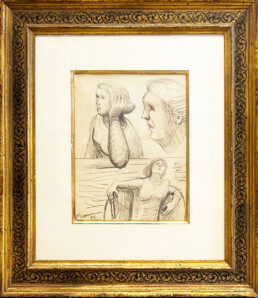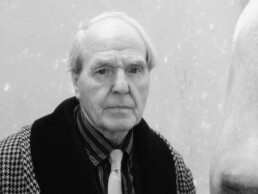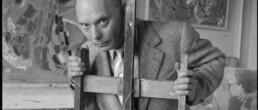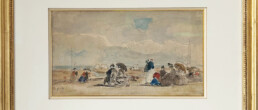Henry Moore
1898 (United Kingdom) - 1986 (United Kingdom)
Biography
Henry Moore (1898-1986) is considered one of the greatest sculptors of the 20th century. Known for his monumental bronze works with their soft, organic forms, he profoundly influenced modern art through his ability to combine the heritage of ancient civilizations with a resolutely contemporary aesthetic. Born in Castleford, Yorkshire (England), Henry Moore showed an early interest in sculpture, encouraged by his teachers. After fighting in the First World War, he won a scholarship to study at the Royal College of Art in London. There, he discovered pre-Columbian art, African art and archaic sculptures, which were to have a lasting influence on his plastic language. Moore soon established himself as a singular figure on the British art scene. In the 1930s, he moved away from academic figuration to explore abstract forms inspired by nature, the human body – particularly the female body – and the relationship between emptiness and matter. These elements became the foundations of his work.
Moore is distinguished by his tactile, intuitive approach to sculpture. He favors raw materials – stone, wood, then bronze – and creates works that are both powerful and meditative. His curved, perforated forms, often evoking elongated silhouettes or protective maternities, are emblematic of his style. His sculptures are never self-contained: they interact with space, light and landscape. This attention to context makes Moore a master at integrating art into public spaces. His works can be found in parks, museums and prestigious institutions the world over – from the Tate Gallery to the Henry Moore Foundation, not to mention the gardens at UNESCO headquarters in Paris. Henry Moore gained international recognition in the 1940s. Commissioned by the British government to document shelters during the Blitz, he produced a series of deeply moving drawings that helped establish his reputation. After the war, he received numerous public commissions and became a symbol of Europe’s cultural resilience. His style, at once rooted in the history of sculpture and open to multiple influences, made him a universal artist. Deeply humanistic, his work transcends aesthetic and cultural boundaries.
Galerie Hurtebize pays tribute to a sculptor whose formal research is rooted in a profound reflection on the human condition, the relationship to the body and to nature. By including him in our collection of modern masters, we are affirming our desire to offer our collectors unique pieces of lasting artistic value, recognized on the international market.







